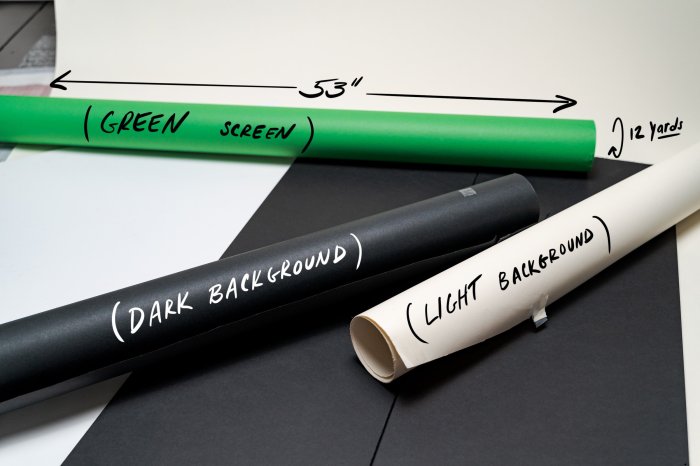Product Photography Essentials dives into the core elements necessary for creating stunning product images that captivate audiences. From the importance of high-quality photos to the art of composition and editing, this guide covers it all with a cool and engaging vibe.
Whether you’re a seasoned pro or just starting out, mastering these essentials will take your product photography game to the next level.
Importance of Product Photography
Product photography plays a crucial role in the success of e-commerce businesses. It is the first interaction customers have with a product online, making high-quality images essential for grabbing attention and driving sales.
Increased Conversion Rates
Good product images have the power to increase conversion rates significantly. When customers can see clear, detailed photos of a product from different angles, they are more likely to make a purchase decision. High-quality visuals build trust and confidence in the product and the brand.
Enhanced Brand Perception
Professional product photos not only showcase the products effectively but also contribute to the overall brand perception. When customers see polished and visually appealing images, they associate that quality with the brand itself. This helps in creating a positive brand image and standing out in a competitive market.
Equipment Needed
When it comes to product photography, having the right equipment can make all the difference in capturing high-quality images that showcase your products in the best light. Here are some essential tools you’ll need to get started:
Lighting Equipment
In product photography, lighting is key. Proper lighting can help highlight the details of your products, enhance colors, and create a professional look. Investing in good lighting equipment, such as softboxes, umbrella lights, or ring lights, can help you achieve the perfect lighting setup for your product shots.
Tripod
A tripod is an essential tool for product photography as it helps stabilize your camera and ensures sharp, clear images. By using a tripod, you can avoid camera shake, experiment with different angles, and maintain consistency in your product shots. Whether you’re shooting in a studio or outdoors, a tripod can be a game-changer in achieving professional-looking product images.
Setting Up a Photoshoot
When setting up a product photography shoot, it’s essential to pay attention to details that can make a big difference in the final result. From choosing the right background and props to arranging lighting, every aspect plays a crucial role in capturing the perfect shot.
Choosing the Right Background and Props, Product Photography Essentials
When selecting the background for your product photography shoot, opt for a clean and simple backdrop that will not distract from the main focus – the product. Avoid busy patterns or textures that could take away from the item you are trying to showcase. Props can enhance the overall composition of the photo and provide context for the product. Make sure they complement the product rather than overpowering it.
Arranging Lighting for Product Photography
Proper lighting is key to achieving high-quality product photos. Consider using a combination of natural light and artificial lighting to create a balanced and well-lit image. Soft, diffused lighting works well for product photography as it helps to eliminate harsh shadows and highlights. Experiment with different angles and intensities to find the best lighting setup for your specific product.
Composition and Styling

When it comes to product photography, composition and styling play a crucial role in capturing the attention of potential customers. The way a product is presented can greatly impact how it is perceived by viewers. Let’s delve into some key aspects of composition and styling in product photography.
Rule of Thirds and Product Photography
The rule of thirds is a fundamental principle in photography that involves dividing the image into nine equal parts using two horizontal lines and two vertical lines. The main subject of the photo is then placed along these lines or at their intersections, creating a visually appealing composition. In product photography, applying the rule of thirds can help draw the viewer’s eye to the product and create a more dynamic and engaging image.
Importance of Angles and Perspectives
Angles and perspectives are essential in showcasing products in the best light. By experimenting with different angles, you can highlight the unique features and details of the product. Shooting from a high angle can make the product appear smaller and more approachable, while a low angle can give a sense of importance and grandeur. It’s important to consider the intended message and the product’s characteristics when choosing the right angle and perspective for your product photography.
Use of Props and Styling Techniques
Props and styling techniques can elevate the visual appeal of product images and help tell a story. By incorporating props that complement the product, you can create a cohesive and visually interesting composition. Pay attention to details such as color schemes, textures, and overall aesthetics to create a visually appealing image that resonates with your target audience. Experiment with different styling techniques such as layering, grouping, or creating visual contrasts to enhance the overall look of your product photography.
Editing and Post-Processing: Product Photography Essentials
Editing and post-processing play a crucial role in product photography, as they help enhance the overall look and appeal of the images, making the products more attractive to potential customers.
Importance of Post-Processing
- Adjusting brightness, contrast, and color balance can make the product stand out and look more appealing.
- Removing imperfections or distractions in the background can help focus the viewer’s attention on the product itself.
- Resizing and cropping images to fit different platforms and aspect ratios can ensure a consistent and professional look across all marketing materials.
Common Editing Techniques
- Using software like Adobe Photoshop or Lightroom to fine-tune the colors, exposure, and sharpness of the product images.
- Applying retouching techniques to remove dust, scratches, or any other unwanted elements from the images.
- Adding text, logos, or graphics to the images to add branding or promotional elements.
Maintaining Consistent Editing Style
- Create and save presets in your editing software to apply consistent adjustments to all your product images.
- Use the same background, lighting setup, and props to maintain a cohesive look across all your product photos.
- Refer to style guides or mood boards to ensure that your editing style aligns with your brand’s overall aesthetic.
Product Photography for Different Platforms
When it comes to showcasing your products online, it’s essential to tailor your images to the specific platform you’re using. Whether it’s for an e-commerce website or social media, understanding the differences in image requirements can make a significant impact on the success of your business.
E-commerce Websites vs. Social Media Platforms
- E-commerce websites typically require high-resolution images with a plain background to highlight the product itself. Clean and professional shots are crucial to build trust with potential customers.
- Social media platforms, on the other hand, allow for more creativity and personality in your product images. You can experiment with different backgrounds, props, and lighting to create a visually appealing feed that resonates with your target audience.
Image Dimensions and Aspect Ratios
- For e-commerce websites, it’s important to follow the platform’s guidelines for image dimensions to ensure your products are displayed clearly and consistently across the site. Common aspect ratios include 4:3 or 1:1 for square images.
- On social media platforms like Instagram and Facebook, square or vertical images tend to perform better than horizontal ones. Understanding the optimal dimensions for each platform can help your products stand out in a crowded feed.
Optimizing Product Images
- When uploading images to e-commerce websites, make sure to use high-quality photos that showcase your products from multiple angles. Utilize zoom features to allow customers to see the details up close.
- For social media platforms, focus on creating visually engaging images that tell a story about your brand. Use filters, editing tools, and captions to enhance the overall look and feel of your feed.
Product Photography Trends

In the ever-evolving world of product photography, staying up-to-date with the latest trends is essential to stand out in the market and capture the attention of consumers. Let’s take a closer look at some of the current trends shaping the industry.
Impact of Lifestyle Product Photography
Incorporating lifestyle product photography into your images can have a significant impact on consumer engagement. By showcasing your products in real-life settings or scenarios, you can help consumers visualize themselves using the product, creating a stronger emotional connection. This approach not only highlights the features and benefits of the product but also tells a story that resonates with the target audience.
Incorporating Storytelling
Storytelling has become an integral part of product photography, allowing brands to communicate their values, mission, and unique selling points effectively. By incorporating storytelling elements into product images, such as using props, models, or context, you can create a narrative that captures the imagination of consumers. This approach goes beyond simply showcasing the product and instead focuses on creating an experience that resonates with the audience on a deeper level.
